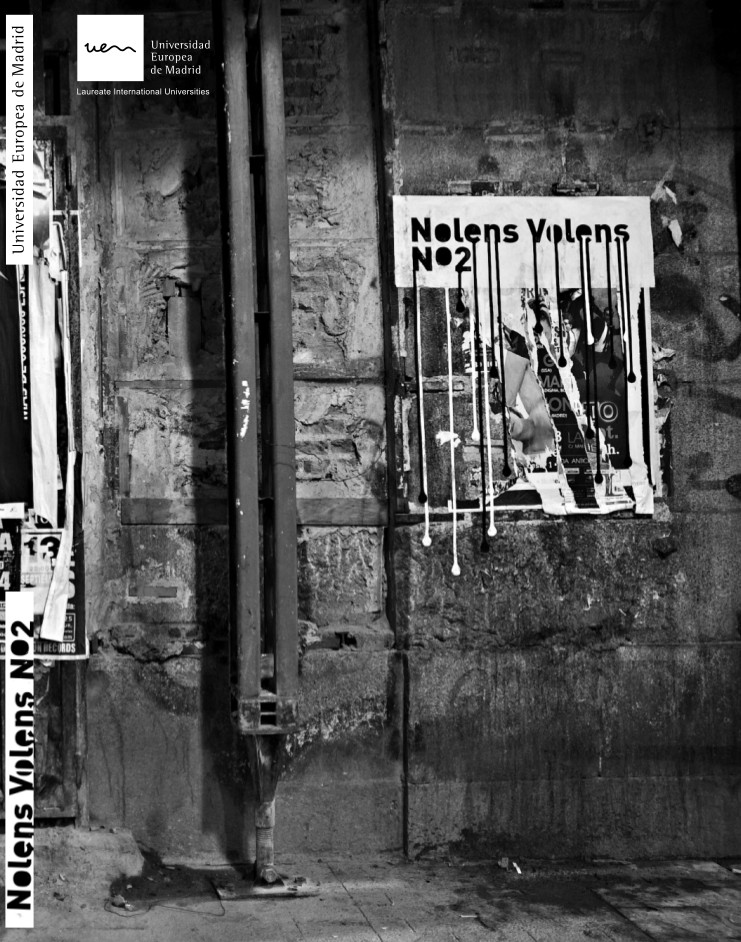
This issue of Nolens Volens intends to explore the relationship between art and the electoral processes. It is structured on the basis of an investigation project called Action arts and election mechanisms and campaigns,directed by Joaquín Ivars and carried out at the Universidad Europea in Madrid, and the exhibition InterAcciones Electorales, which took place at the Madrid exhibition venue Off Limits, and included historical material, as well as the specific actions and artistic projects carried out during the campaign for the elections of May 9, 2008.The magazine includes the works presented at that exhibition with the addition of several new collaborations, such as Eneas Bernal’s selection that presents the response of various Venezuelan artists to the elections called during the administration of President Hugo Chavez, or the project of the Mexican group Tercerunquinto. These additions add nuances and extend the reflections made in the exhibition.
With no initial intention, but quite fortunately, the current issue expands the conception of the previous one, which was structured around the central theme of “current events” as work material. Given that, as we explained above, the exhibition InterAcciones Electorales is the backbone of the second issue, the magazine opens with a text by Domingo Mestre, co-curator of the show together with Joaquín Ivars. Both Mestre and Ivars also participated in the exhibition as artists. In the general conception of InterAcciones Electorales we may follow the discourse for art’s involvement with politics, calling for the return to an active avante-gard, which simply means returning to dealing with matters that concern us as citizens, taking a stance, placing ourselves into a Gramscian type geneology of work, which still has faith in the possibility of group action, in intellectual resistence that refuses to accept the principle of domination under which we live as eternal, be it through marginal or isolated moments of discourse. On the other hand, it is clear that some of the different practices presented here diverge from this conception, bring new perspectives, and are even critical with the initial premise itself.
We all know that art speaks to a certain public, and it is this public that we should address. We are all sufficiently conscious of the fact that “art is never enough” as a transforming practice. Given these convictions, it is still reasonable to ask certain questions with respect to art which means to be be political, or at least takes politics as its immediate subject of reflection. The questions that emerge are diverse, as are the artists’ positions: the need to go beyond the strictly artistic sphere (so as to ward off the neutralization to which any project presented under the label of art is submitted), the search for metalinguistic strategies (as a way to overcome the contradictions of an art that seeks to dissolution in reality), or the need for self-criticism in this sort of projects are the different underlying themes of the projects presented here.
Collaborators:Domingo Mestre, Joaquín Ivars, Antoni Muntadas, Beatriz Alonso, Jorge Luis Marzo y Fito Rodriguez, Victoria Gil-Delgado, Xelo Bosch, Iñaki Estella, Xurxo Estévez, Alberto Chinchón, José Luis Corazón, Noaz, Dier, Democracia, Daniel García Andújar, Daniel Villegas, Eneas Bernal, Federico Ovalles-Ar, Suwoon Lee, Deborah Castillo, Luis Romero, Iván Candeo, Luis Gómez Rincón, Miguel Molina, Alex Coronado y Javier Casado, Leo Ramos, Pepe Miralles, Rogelio López Cuenca y Tercerunquinto.